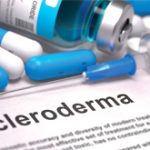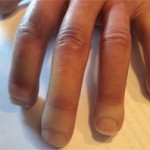(Reuters)—The U.S. Food and Drug Administration needs Corbus Pharmaceuticals to show positive data from only one late-stage study on its experimental treatment for scleroderma to support a marketing application, the company said. Corbus said on Wednesday it expects to start the study on 270 patients in the fourth quarter and that it was in talks…
Search results for: scleroderma

Distinct Autoantigens Found in Patients with Scleroderma & Coincident Cancer
Recent research examined the relationship between patients with scleroderma who are anti-CTP antibody negative and cancer. Combing two complementary technologies, PhIP-Seq and PLATO-BC, researchers identified the POLR3 complex in cancer-associated scleroderma…

Targeted Therapy for Scleroderma Fibrosis
Scleroderma, or systemic sclerosis (SSc), is an autoimmune disease characterized by vasculopathy and fibrosis. Although relatively rare, with a prevalence in North America of approximately 300 per 1 million people, SSc is associated with significant morbidity and high rates of mortality.1 Patients with scleroderma have four times greater mortality than age- and sex-matched controls, with…

Rheumatology Case Report: Concomitant Lupus with Features of Scleroderma, Castleman Disease
We report a case of a 27-year-old woman who was initially diagnosed with systemic lupus erythematosus (SLE), had features of scleroderma and was subsequently found to have lymph node biopsy consistent with multicentric Castleman disease (MCD). She also had serologic evidence of acute Epstein-Barr virus (EBV) infection (vs. reactivation of EBV). The occurrence of MCD…

Treatments for Scleroderma with Gastrointestinal Involvement Address Symptoms
CHICAGO—Nine out of 10 scleroderma cases include clinical signs of gastrointestinal (GI) involvement, with severe involvement associated with high mortality rates, but the pathology of this is not very well understood, a GI expert said at the ACR’s State-of-the-Art Clinical Symposium. That has left clinicians with a slate of treatments—anti-reflux, antimicrobials and prokinetics—that address only…

From the Expert: New Advances in Treatment of Systemic Scleroderma
A recent study found that mycophenolate mofetil is an effective alternative for the treatment of systemic scleroderma with interstitial lung disease, resulting in possible long-term improvement. According to Aryeh Fischer, MD, this new research points to the future expansion of treatment options…

2015 ACR/ARHP Annual Meeting: Research Lends Insight Into Osteoporosis Treatment, New Auto-Inflammatory Disease, Scleroderma
SAN FRANCISCO—Post-menopausal women with osteoporosis, previously treated with oral bisphosphonates, had greater increases in bone density when taking denosumab compared with zoledronic acid over a year’s time, according to a study presented at the 2015 ACR/ARHP Annual Meeting. The findings were discussed in the Discovery 2015 plenary session, which focused on new research. In the…

Resunab Fast Tracked to Treat Scleroderma, Plus, Infliximab Biosimilars in Europe
The FDA has fast-tracked the development of a drug to treat systemic sclerosis, or scleroderma; initial clinical trials started in June. Also, a major hospital group in France has selected the biosimilar infliximab to treat its patients with RA, Crohn’s disease and psoriasis…

The ACR’s State-of-the-Art Clinical Symposium: Patients with Scleroderma, Lung Disease May Benefit from Aggressive Therapy
CHICAGO—Scleroderma patients with pulmonary arterial hypertension (PAH) might benefit from more aggressive therapy, an expert in the field said in a session on lung involvement in rheumatic diseases at the American College of Rheumatology’s 2015 State-of-the-Art Clinical Symposium in May. Newer trials—the SERAPHIN trial on macitentan, GRIPHON on selexipag, and AMBITION on an ambrisentan/tadalafil combination—show…

Rehabilitation, Therapy Goals for Scleroderma, Acroosteolysis
Scleroderma is a rare rheumatologic autoimmune disease that affects the skin and can also affect other organs. Due to excess formation of scar tissue, blood flow to the extremities is decreased, primarily to the hands, and tissues often become hypoxic, resulting in sclerodactyly and proximal skin involvement.2 The incidence of scleroderma in the U.S. is…
- « Previous Page
- 1
- 2
- 3
- 4
- 5
- …
- 37
- Next Page »